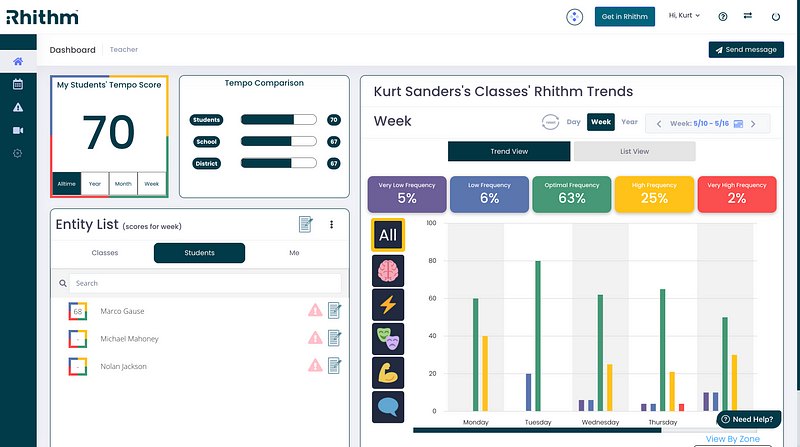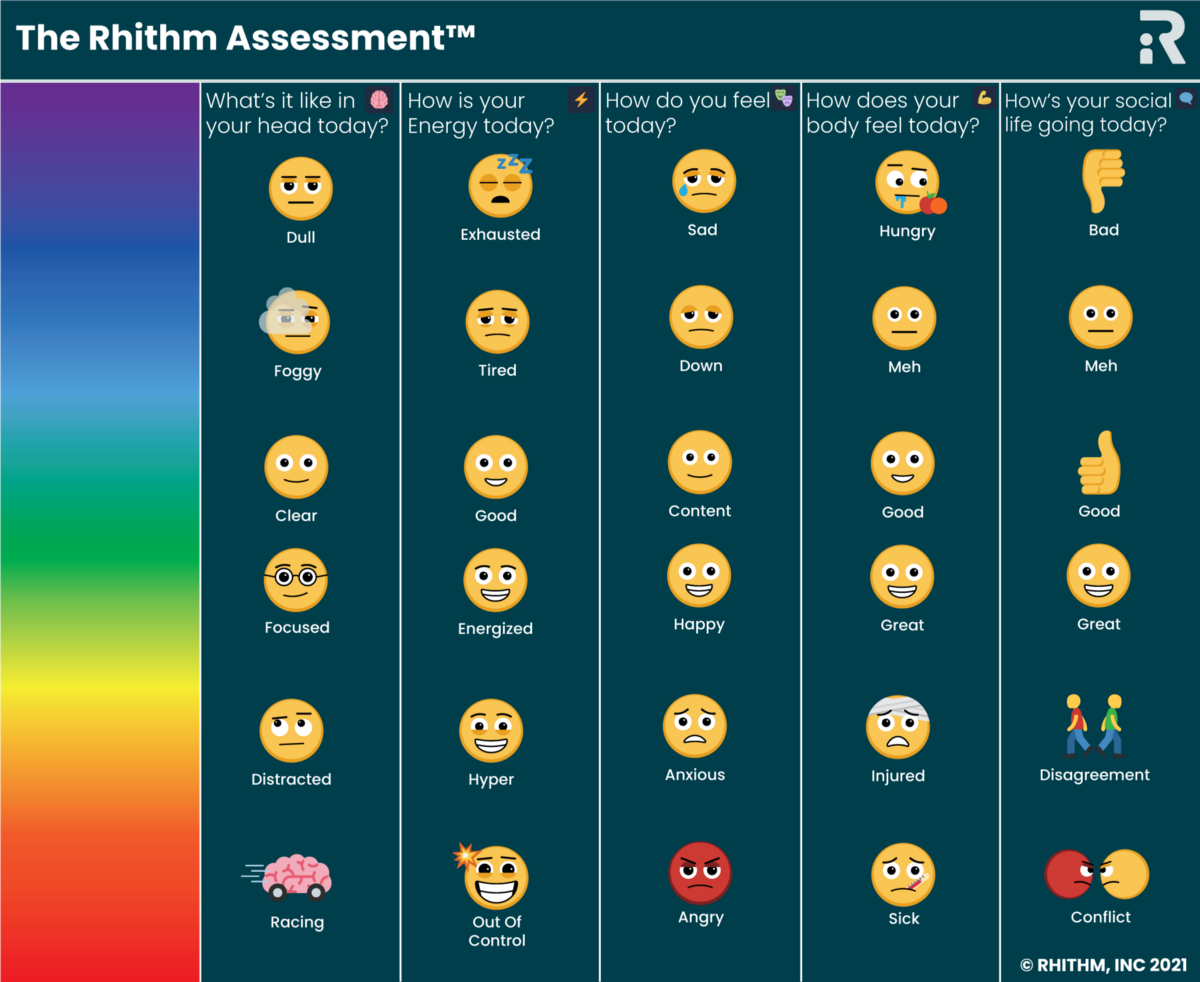Why We Invested in Rhithm
by Jennifer Wu, Venture Partner at Reach Capital
Reach has been tracking youth mental health trends since 2017. The CDC had just released its report about a rash of youth suicides in Palo Alto, many occurring on the train tracks a stone’s throw from my house. More broadly, with the rise of social media, we were also seeing increasing rates of anxiety and depression associated with increased screen time.
These trends continued unabated through 2019 and worsened last year as the pandemic forced kids into social isolation. Today there are widespread reports of anxiety and depression, increased suicidal thoughts and suicides, and growing proportions of visits to emergency rooms and health insurance claims attributed to youth mental health.
There is no easy fix. Practices such as mindfulness and meditation, trauma-informed instruction, and creating an inclusive school culture are hard for schools to implement well and seem under-powered against larger societal forces like racial injustice, social media, college-going pressure, and COVID-19. Plus, with the social stigma associated with mental illness, students’ struggles are often out of sight, not visible even to parents.
So when Josh Knutson first approached me, claiming he could “very efficiently solve big problems” in this space, I was initially skeptical. A behavioral therapist who had worked with adolescents struggling with mental health challenges, Josh wanted to impact more kids than he could through his one-on-one sessions. He asked: “How would things shift if teachers and other adults knew what therapists know about their students?” In 2018, he began working on a tool to do just that in a safe, secure way informed by research. Thus, Rhithm was born.
My skepticism faded when Josh gave me a demo. The lightweight Rhithm app, based on neurophysiology research, fits easily into classroom routines. As students start class, they check in with the app, indicating how they’re feeling — along mental, energy, emotional, physical and social dimensions — with emojis and optional text responses. Students are then presented with a short activity specific to their current emotional state. For example, if students are agitated, they may be guided through a breathing exercise; if low on energy, a stretching routine. The goal is to help them feel better in the moment and be more ready to learn. Over time, students develop self-awareness and self-management skills and build a toolkit of coping strategies they can use in any context.

While simple, these check-ins offer a valuable glimpse into a learner’s state of mind — something not always apparent, especially during remote learning. It provides teachers, counselors, principals and other caring adults real-time insights about students’ well-being, so they can intervene with support when needed. Here are a few examples of how educators use Rhithm and what they’ve learned:
“You set up the alerts and it has let me know about a few situations where kids were hungry for 3 days in a row or angry for 5 days. It allows me to have conversations with staff and parents to make sure kids are getting needs met.”
“I can see their responses and chat about what is making them feel meh, or hyper, or anxious. I have had several good conversations (some with tears) about what is going on in their lives and how I can help or advise them. Without them checking in on the app, I know some would not share the information. Love it!!!!“
“This is only information we would know if we were able to engage with them one-on-one on a daily basis and in our school of 1,400 that is not always easy to do at all as a counselor. This gives us a glimpse into how our students are coping in all aspects on a daily basis”
At a middle school in Fort Worth, Texas, within the first four days of use, school staff discovered students who were struggling and were able to intervene. They connected a family of a student cutting himself with community resources. They connected another student dealing with anxiety and depression with a school intervention specialist. They connected a student feeling isolated with a buddy in class and at lunchtime.
Less than a year after launching the product, Rhithm is used by more than 100,000 students and staff across over 130 districts, with significant market penetration in Alabama and Texas. And already it’s created unique sets of data and insights that can illuminate broader trends across a region or state.
This is the right product at the right time. Coming out of the pandemic, student mental wellness will be a top priority for school leaders as they start spending their stimulus dollars. U.S. Education Secretary Miguel Cardona sees an opportunity to ensure that mental health is “baked into the DNA of schools as a core service, in a way that reaches more students in a wider manner.”
Rhithm offers an easy way for districts to get started. The 3-minute check-in benefits students and teachers in the moment, while also generating real-time data about student well-being that can be used to plan, deliver and monitor the effectiveness of student supports.
We tip our hats to Rhithm co-founders, Josh Knutson and Jake Gannon, for launching an elegant and much-needed solution — one that will remain important long past the pandemic. We are proud to lead this $4M seed round, joined by SJF Ventures, Red House Education, and Edovate Capital — co-investors who have a deep understanding of the youth mental health crisis, see the tremendous value of Rhithm’s solution, and share an urgency to get it into as many schools as possible.
If you’re interested in joining their mission, check out Rhithm’s careers page, or contact Rhithm at team@rhithm.app.


